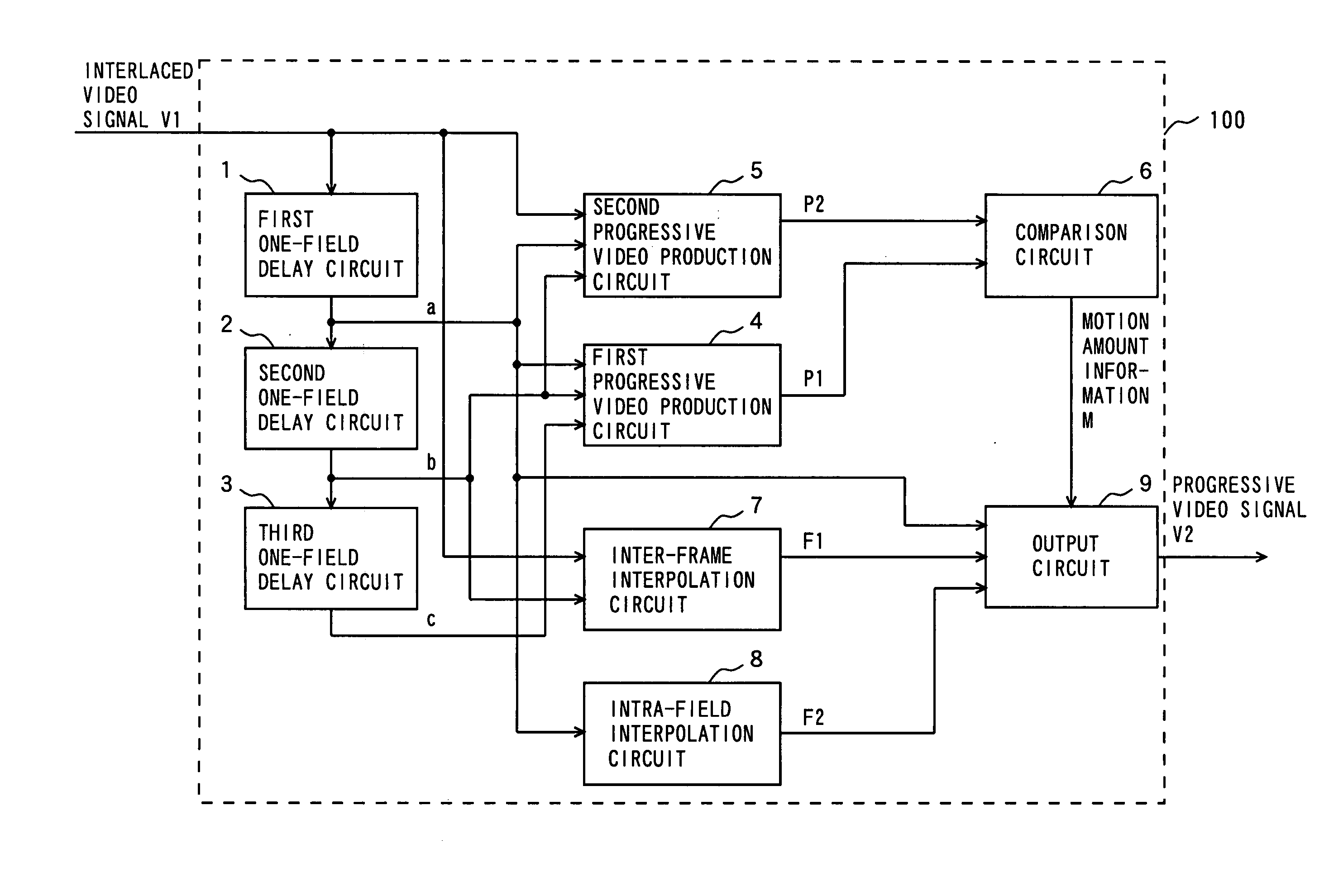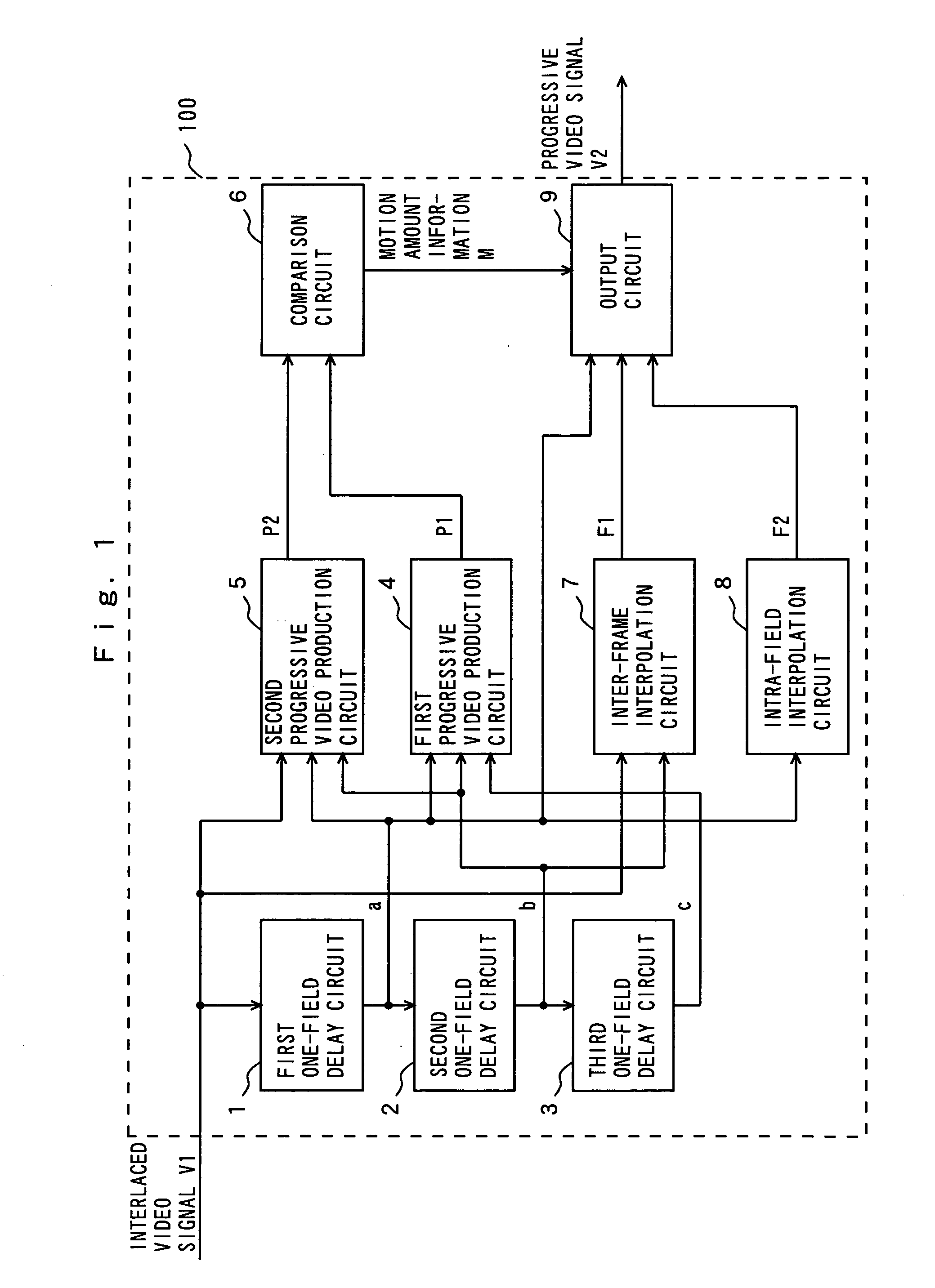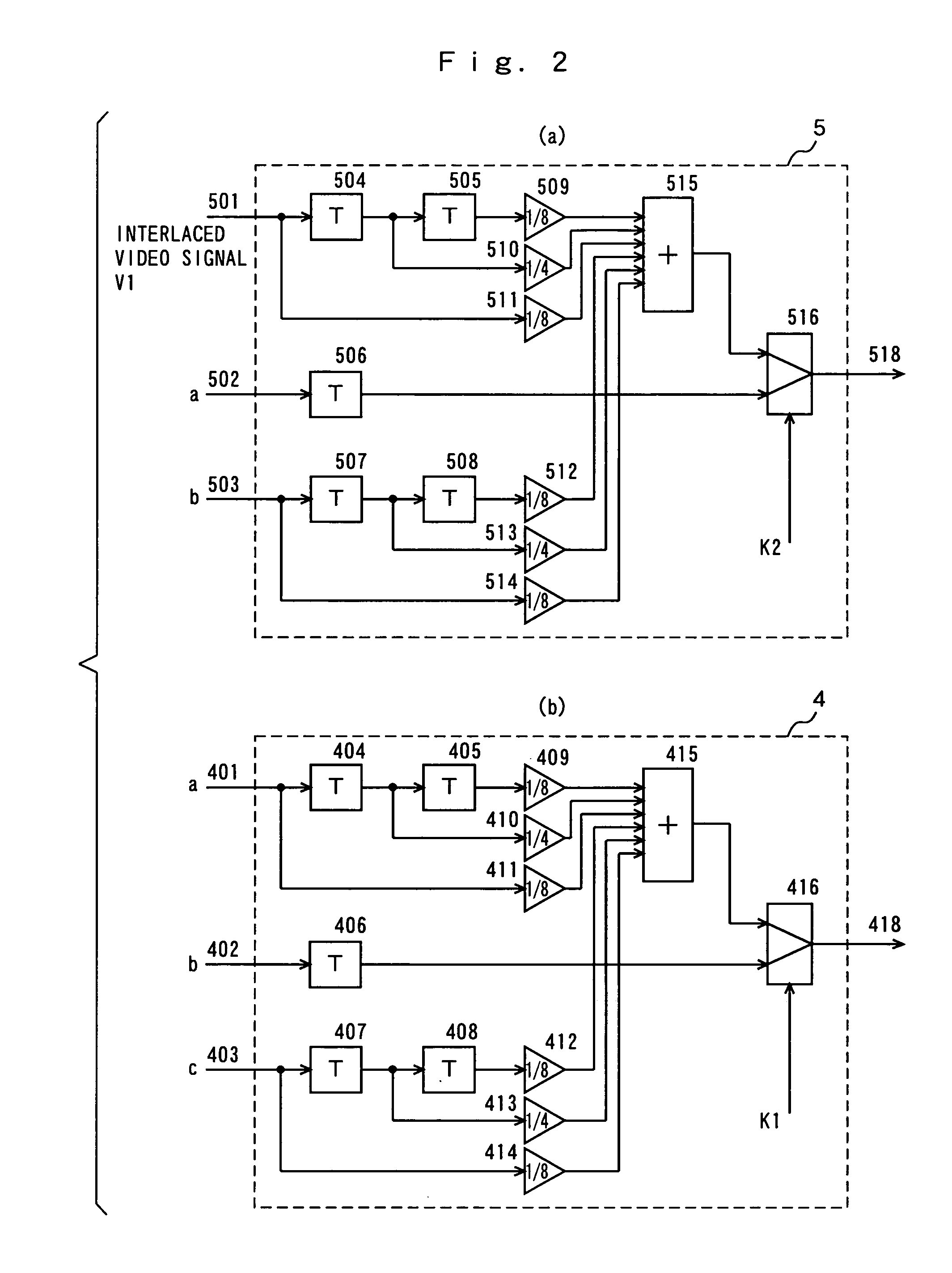Image conversion device and image conversion method
a technology of image conversion and image, which is applied in the direction of signal generators with optical-mechanical scanning, color signal processing circuits, television systems, etc., can solve the problems large noise of large difference in luminance value, and inability to accurately judge pictures, etc., to achieve accurate motion detection, high resolution, and precise motion detection
- Summary
- Abstract
- Description
- Claims
- Application Information
AI Technical Summary
Benefits of technology
Problems solved by technology
Method used
Image
Examples
first embodiment
[0087]FIG. 1 is a block diagram showing a picture conversion apparatus 100 according to a first embodiment of the present invention. The picture conversion apparatus 100 shown in FIG. 1 comprises a first one-field delay circuit 1, a second one-field delay circuit 2, a third one-field delay circuit 3, a first progressive video generation circuit 4, a second progressive video generation circuit 5, a comparison circuit 6, an inter-frame interpolation circuit 7, an intra-field interpolation circuit 8, and an output circuit 9. Further, the picture conversion apparatus 100 comprises a timing generation circuit (not shown) for generating a timing signal required for each block upon receipt of a signal which is synchronized with an interlaced video signal V1 and a signal corresponding thereto.
[0088] The operations of the picture conversion apparatus 100 will be described below. First, the interlaced video signal V1 is successively delayed by the first one-field delay circuit 1, the second ...
second embodiment
[0188] A picture conversion apparatus according to a second embodiment will be described. In the picture conversion apparatus according to the second embodiment, a plurality of virtual pixels are newly generated between lines in the progressive video field signal P1 and the progressive video field signal P2 which are respectively generated by the first progressive video generation circuit 4 and the second progressive video generation circuit 5 shown in FIG. 1.
[0189] As a result, the picture conversion apparatus according to the second embodiment can detect motion information more precisely on the basis of the plurality of virtual pixels even when a picture slowly moves at a rate of not more than one line per field, as compared with the picture conversion apparatus 100 according to the first embodiment, as well as to realize optimum control of still picture processing and moving picture processing.
[0190]FIG. 7 is a block diagram showing the picture conversion apparatus according to...
third embodiment
[0282] A picture conversion apparatus 100b according to a third embodiment of the present invention will be described. FIG. 11 is a block diagram showing the configuration of the picture conversion apparatus 100b according to the third embodiment.
[0283] The picture conversion apparatus 100b shown in FIG. 11b is the same as the picture conversion apparatus 100 according to the first embodiment shown in FIG. 1 except that the frame interfield interpolation circuit 7 is eliminated, a non-adaptive region detection circuit 12 is added, and an output circuit 9b is included in place of the output circuit 9 and hence, the same constituent elements are assigned to the same reference numerals, and only different constituent elements will be described.
[0284] An interlaced video signal V1 and an interlaced video signal a which is an output signal from a first one-field delay circuit 1 are fed to the non-adaptive region detection circuit 12 shown in FIG. 11.
[0285] The non-adaptive region dete...
PUM
 Login to View More
Login to View More Abstract
Description
Claims
Application Information
 Login to View More
Login to View More - R&D
- Intellectual Property
- Life Sciences
- Materials
- Tech Scout
- Unparalleled Data Quality
- Higher Quality Content
- 60% Fewer Hallucinations
Browse by: Latest US Patents, China's latest patents, Technical Efficacy Thesaurus, Application Domain, Technology Topic, Popular Technical Reports.
© 2025 PatSnap. All rights reserved.Legal|Privacy policy|Modern Slavery Act Transparency Statement|Sitemap|About US| Contact US: help@patsnap.com



